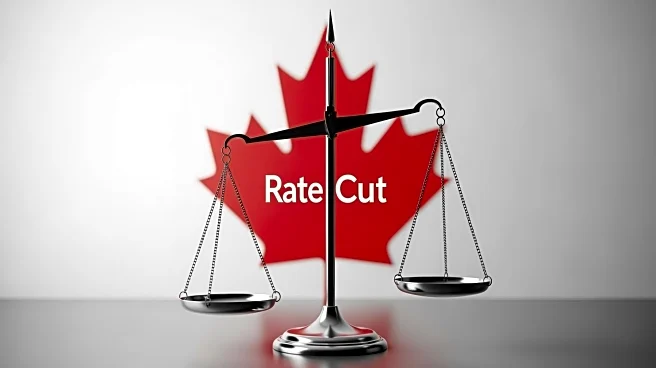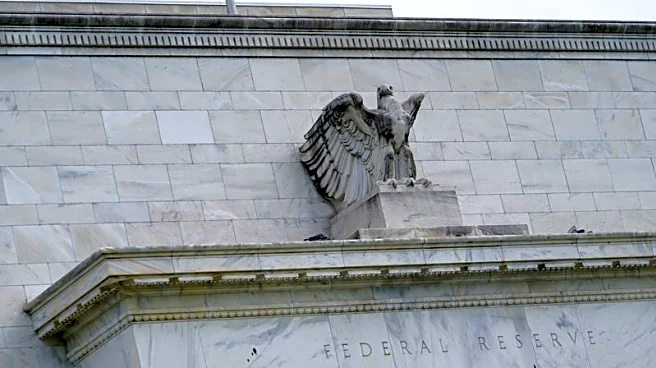What's Happening?
The Canadian dollar has gained strength against the U.S. dollar following the release of domestic inflation data showing a rise to 2.4% in September, up from 1.9% in August. This increase was driven by
a smaller decline in gasoline prices and rising food costs. Despite the stronger currency, market expectations for a rate cut by the Bank of Canada remain high, with investors seeing an 80% chance of a cut at the upcoming policy decision on October 29. The Canadian bond yields have also moved higher, narrowing the gap with U.S. yields.
Why It's Important?
The rise in inflation and the strengthening of the Canadian dollar have significant implications for Canada's economic outlook. A stronger currency can impact export competitiveness, while rising inflation may influence consumer spending and monetary policy decisions. The potential rate cut by the Bank of Canada reflects ongoing concerns about economic growth and inflation management. These developments are crucial for businesses, investors, and policymakers as they navigate the economic landscape and make strategic decisions.
What's Next?
The upcoming policy decision by the Bank of Canada will be closely watched as it addresses inflationary pressures and economic growth concerns. The central bank's actions will have implications for interest rates, currency strength, and overall economic stability. Stakeholders, including businesses and investors, will need to monitor these developments to understand the potential impact on trade, investment, and financial markets.
Beyond the Headlines
The situation highlights the interconnectedness of global economies and the influence of domestic policies on international markets. The Canadian dollar's movement in response to inflation data underscores the importance of economic indicators in shaping currency values and investor sentiment. As central banks worldwide navigate similar challenges, the role of monetary policy in managing inflation and supporting economic growth remains a critical focus.












